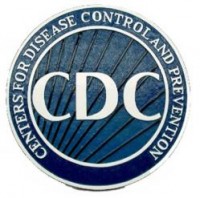Today, the Centers for Disease Control and Prevention (CDC) released its HIV Surveillance Report, 2010, Vol. 22. This report presents data for diagnoses of HIV infection and AIDS through December 31, 2010 and reported to CDC through June 2011.
CDC’s 2010 HIV Surveillance Report is used by epidemiologists, researchers, and public health practitioners across a wide variety of institutions to help guide program planning, evaluation, and resource allocation. The surveillance report contains data collected throughout the United States and six U.S. dependent areas by HIV surveillance programs in state and local health departments. It is one of the primary sources of information on HIV in the United States.
We are pleased to note that there are now 51 areas (46 states and five dependent areas) that have had confidential, name-based HIV infection reporting long enough (i.e., since at least January 2007, with reporting to CDC since at least June 2007) to be included in the 2010 HIV Surveillance Report. The 46 states represent approximately 92% of cumulative AIDS diagnoses in the 50 states and the District of Columbia through 2010. New states included in this year’s report are California, Delaware, Montana, Oregon, Rhode Island, and Washington (state).
AIDS data from all 50 states, the District of Columbia, and six U.S. dependent areas are included in the report. AIDS data from one US dependent area, the Republic of Palau, are included for the first time in this report.
The 2010 HIV Surveillance Report shows, from 2007 through 2010,
- The annual estimated number and rate of diagnoses of HIV infection remained stable in the 46 states (i.e., there was less than a 5% increase or decrease from 2007 through 2010), even though estimated numbers and rates of diagnoses of HIV infection increased in some subgroups and decreased in others. CDC estimates that there were 47,129 diagnoses of HIV infection in the 46 states in 2010. The estimated rate of diagnoses of HIV infection the 46 states in 2010 was 16.1 per 100,000 persons.
- The annual estimated number of AIDS diagnoses in the United States remained stable, and the rate of annual AIDS diagnoses decreased (based on data from the 50 states, and
the District of Columbia). CDC estimates there were 33,015 AIDS diagnoses in 2010. The estimated rate of AIDS diagnoses in the United States the same year was 10.8 per 100,000 persons.
- From the beginning of the epidemic through 2010, there have been 1,129,127 persons diagnosed with AIDS in the United States.
- The majority of diagnoses of HIV infection were among blacks/African Americans (46% of all diagnoses of HIV infection), whites (29%), and Hispanics/Latinos (20%). The only racial/ethnic group to have an increase in the rate of HIV diagnoses was American Indians/Alaska Natives.
- By transmission category, the only increase seen in the number of HIV diagnoses was among adult and adolescent males with infection attributed to male-to-male sexual contact.
The 2010 HIV Surveillance Report shows a 10% increase in the number of HIV diagnoses among persons aged 15-19 years and a 33% increase among persons aged 20-24 years. The fact that our young people are bearing a significant burden of the nation’s HIV infections has been highlighted in recent CDC publications of HIV incidence and a recent CDC surveillance supplemental report focusing on diagnoses of HIV infection among adolescents and young adults. HIV continues to have a significant effect on young people in the United States, especially young men who have sex with men.
Click HERE to see the whole HIV Surveillance Report, 2010, Vol. 22.

